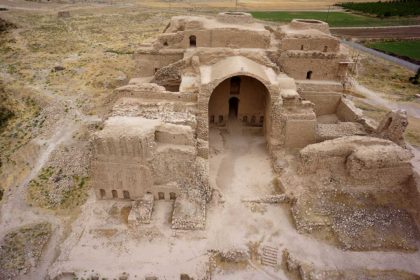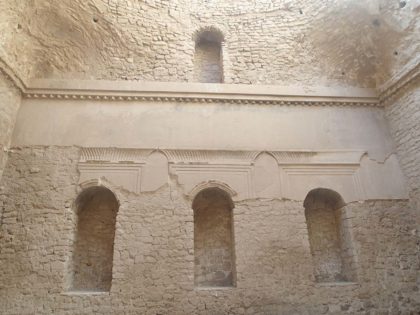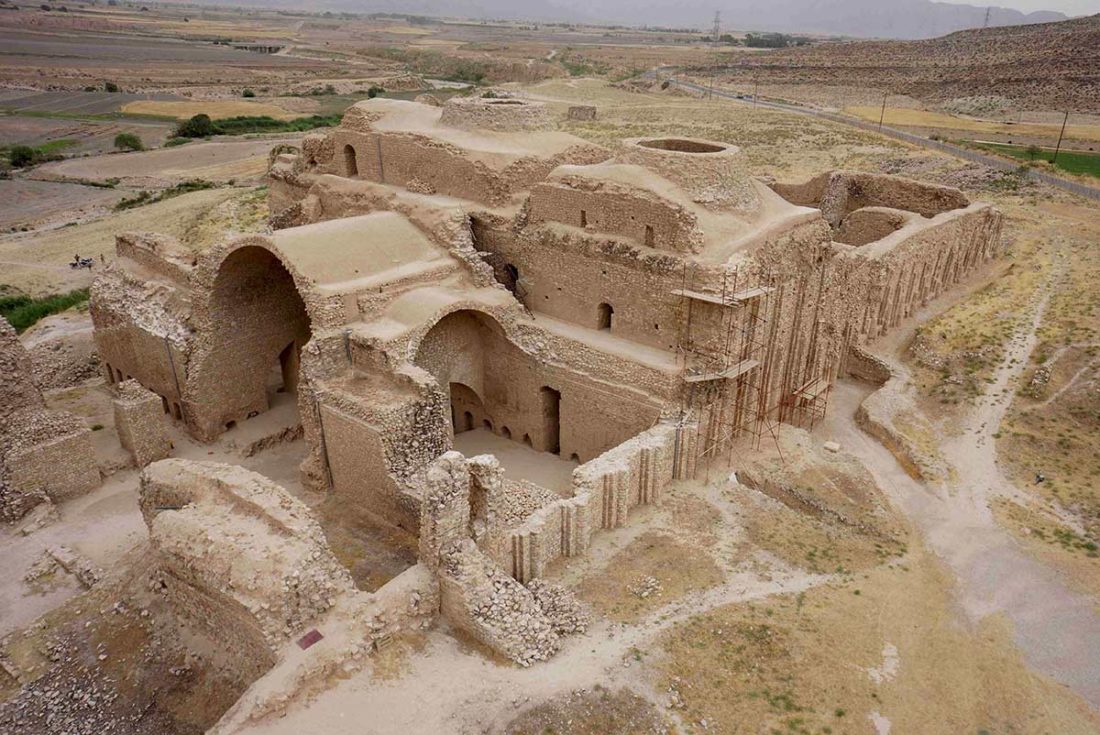Palace of Ardashir Papakan (کاخ اردشیر پاپکان)
There are different versions of the history of his ancestors. It is believed that there was an Anahita temple (goddess of water) in the ancient city of Istaxr near Persepolis from the Achaemenid to the Sasanian Era.
Ardashir was Papak´s son and his the grandfather Sasan was the principal of the temple. There is evidence of Ardeshir from 211/2 CE on.
 After defeating Ardawan (Artabanos) IV in Battle of Hormozdgan on 28 April 224 CE, which marked the rise of Sasanid empire, Ardashir I built a castle in Firouzabad. This castle is not a luxurious one and it has to be doubted that the palace was a residential castle. The king most probably resided in the nearby city Gūr or Xorr.
After defeating Ardawan (Artabanos) IV in Battle of Hormozdgan on 28 April 224 CE, which marked the rise of Sasanid empire, Ardashir I built a castle in Firouzabad. This castle is not a luxurious one and it has to be doubted that the palace was a residential castle. The king most probably resided in the nearby city Gūr or Xorr.
Nevertheless, this palace is of great scientific value. It is related to other archaeological sites in the region, the Qale Dokhtar Fortress, two impressive Reliefs and Shahre Gūr or Xorr. A path leads along the river “Tange Ab” (meanwhile dried up) starting from Qale Dokhtar passing by a bridge (only some ruins remained) and a relief showing coronation ceremony to another relief The Victory of Ardashir over Ardawan IV, to the Place of Ardashir I and finally to Shahre Gūr. The whole region has to be regarded as an ensemble.
The other peculiarity of Ardashir Palace is the innovation of the transition from rectangular walls of two Halls to a spherical dome, the oldest known so far.
Sasanids considered themselves as ancestors of Achaemenid kings. Inside the palace Hall, one can see remains of stucco works with motifs known from Persepolis.
In the 1970’s, Dietrich HUFF documented the Palace of Ardeshir Papakan and the surrounding area. Like many other foreign archaeologist, he left Iran before the revolution.
His original proposal not only contained maps and data of the site, but was also intended as a proposal for a research center with houses, shops, schools, hospital etc. Apparently, the Pahlavi Government was planning to establish a new scientific city. In 2015, the Department Near Eastern Archaeology of the University of Innsbruck in cooperation with Iranian Centre for Archaeological Research (ICAR) documented the Palace of Ardashir I .
The documentation consisted of the measurement of the complex and its surroundings, the photographic data acquisition, data processing (generation of a 3D model), the data visualization and dissemination. The Ardashir Palace has been a UNESCO World Heritage Site since 2018.
by Dr. A.Darvish Zadeh
Pictures A.Darvish Zadeh and by courtesy of Department of Near Eastern Archeology of University of Innsbruck and ArcTeam.


No Comments